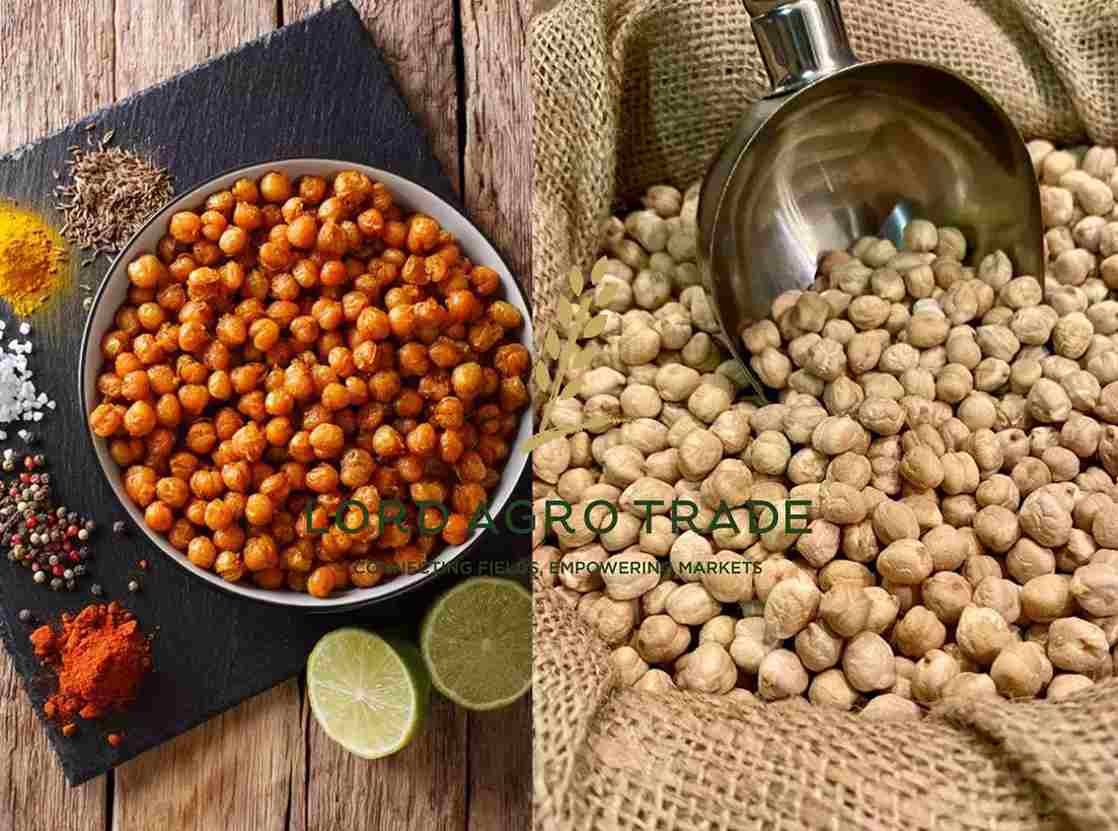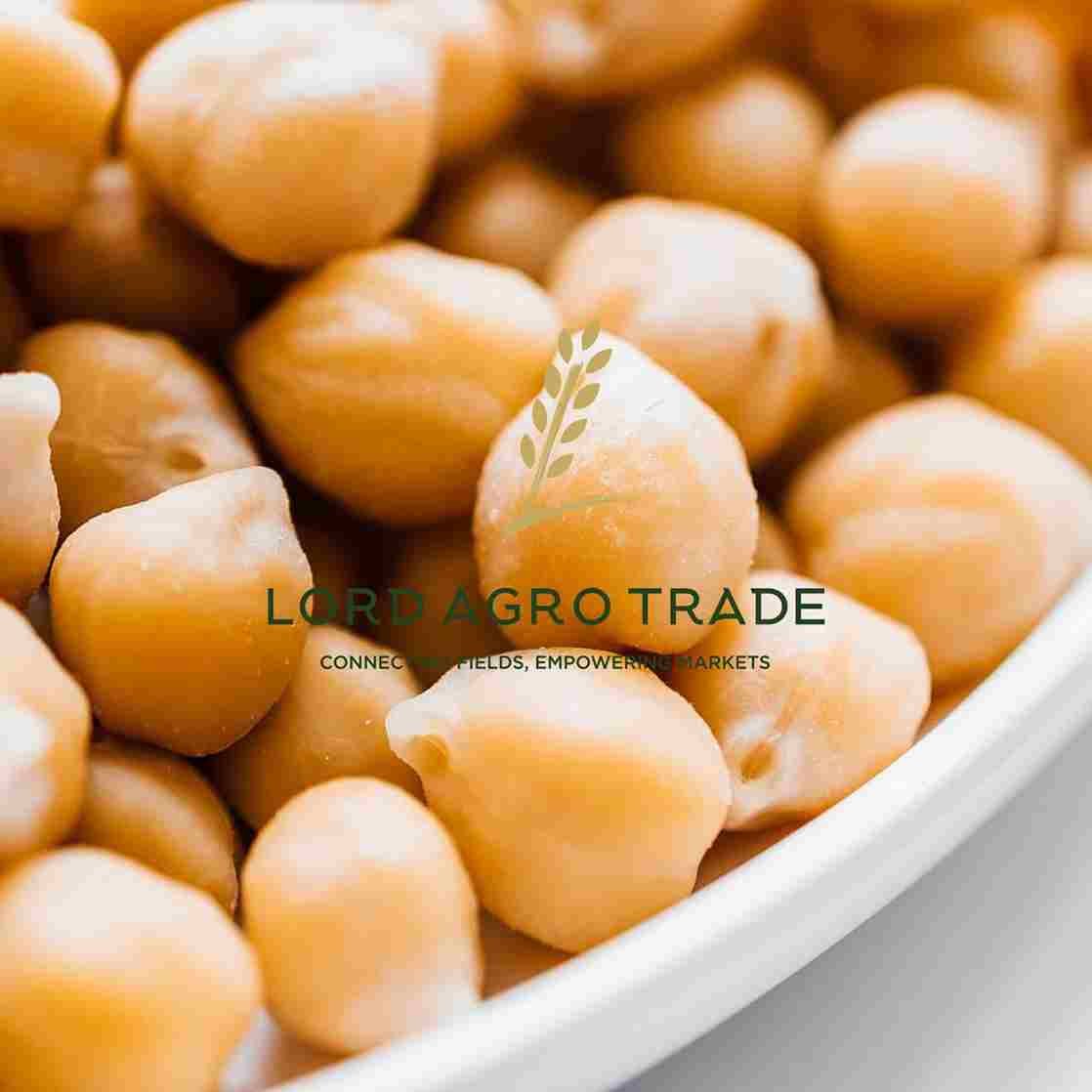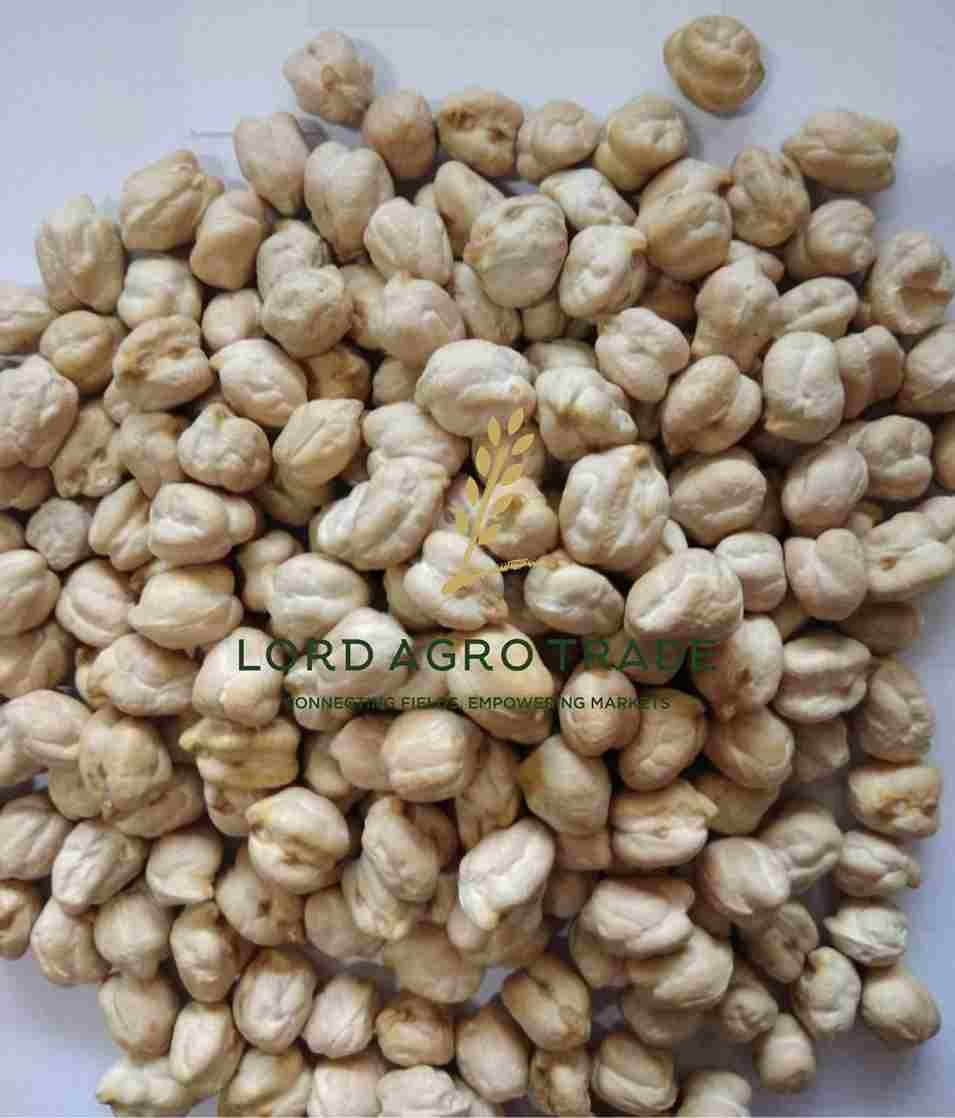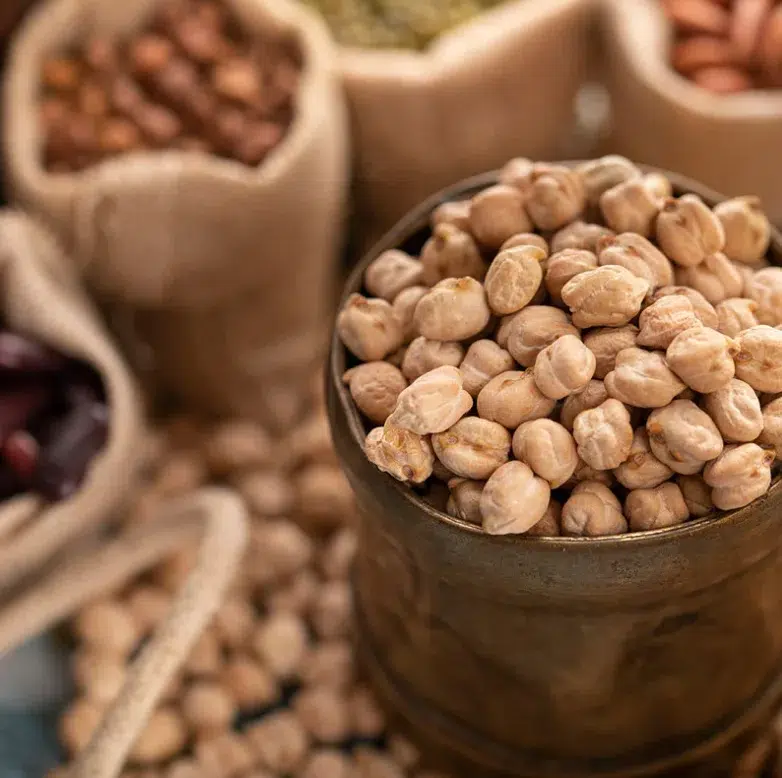Gulfood
17 To 21 FEB 2025 | DUBAI WORLD TRADE CENTRE
We’re excited to see you at Gulfood 2025!
Gulfood
17 To 21 FEB 2025 | DUBAI WORLD TRADE CENTRE
We’re excited to see you at Gulfood 2025!


Chickpeas are a multipurpose and widely cultivated legume that exists in a global spectrum of culinary traditions and, therefore, offer a great nutritional profile; they are characteristic sustenance across numerous cultures, especially in Middle Eastern, Indian, and other culinary traditions. Chickpeas provide a solid amount of protein with a slight nutty flavor, lending themselves to hummuses, falafels, salads, and curries.
When it comes to chickpeas, most people are a bit perplexed as to the particular distinguishing features that set one apart from another. A very usual question arises as to whether Kabuli chana and chickpeas differ, and this has led many to look for the distinctions between chickpea and Kabuli Chana and between chickpea and Kabuli Chana to comprehend how they vary in taste, look, and use.
While both of different varieties of the same species, they retain their own peculiar characteristics that alter their physical appearance while also affecting their flavor profile and application in the kitchen. The following discourse will then consider and compare the chickpea and Kabuli chana to establish the truth of their separate species or merely being different varieties in the legume family.
This discussion about the differences between chickpea and Kabuli chana is crucial for anyone interested in exploring legumes.
Chickpeas, or Cicer arietinum, mark the ancient legume, grown through the centuries and essential to many world cuisines. To be held in esteem for their protein value, they have been chosen by vegetarians and vegans as the plant protein source.
Completely high in fibre, they also have essential minerals and vitamins to serve as the enriched substitute for a normal diet.
The texture and taste profiles render though apparent differences between chickpea and Kabuli chana.
Two types of chickpeas mainly exist-above are Desi and Kabuli. Similar in species but differing in size, appearance, and culinary applications.
While talking of differences between chickpea and Kabuli chana, cooking is an essential consideration.
Kabuli Chickpeas: They are bigger, rounder, and lighter; usually beige or tan in colour They are mostly employed in Mediterranean, Middle-Eastern, and Western culinary styles for the making of hummus, falafel, and salads.
With smooth texture, Kabuli chana showcases several ways in which chickpea and Kabuli chana work differently to complete a dish.
Desi Chickpeas:
Desi Chickpeas: These are dark-colored and usually smaller in size-black or brown; these are angular, unlike those; the skin covering is thicker than Kabuli. These are largely employed in South Asian culinary applications, particularly for curries, dals, and snacks.
Both types of chickpeas are nutrient-dense, particularly proteins, fiber, folate, and iron. Kabuli chickpeas contain a milder litter-like flavor and smooth texture. Desi chickpeas contain an earthy flavor and harder texture. Both types combined form one of the core ingredients of food throughout the world.
Such differences between chickpeas and Kabuli chana account for their very diverse usage in the gastronomic niches of the world.

As one learns about the variation between chickpea and Kabuli chana, one should also take note of their origin.
Most chefs talk about variations between chickpea and Kabuli chana as they make their ingredient choices for meals.
Kabuli chana, or Kabuli chickpeas, are a garden chickpea variety that is lighter in color and much larger than the Desi chickpea. It is one of the most widespread chickpeas eaten worldwide, especially in Mediterranean, Middle Eastern and Western countries, yet kabuli chana finds application in many popular dishes like hummus, falafel, chickpea salads etc.
Understanding the differences between chickpea and Kabuli chana can enhance your cooking experience.
View product: kabuli chickpeas
These differences between chickpea and Kabuli chana can affect how they are utilized in various recipes.
While Kabuli channa originated in the Middle East, it grew first across the Mediterranean through to Central Asia. After centuries of use, it spanned further to other regions including South Asia where it is a regular use item today in political nations such as India, Pakistan and Bangladesh. The name “Kabuli” refers to Kabul, the capital of Afghanistan which is one of the earliest regions of cultivation for this particular variety of chickpea.
The worldwide spread of Kabuli chickpea is rather new despite it being an ancient species; with the new adoption across agricultural systems as a commercially available crop it is becoming an invaluable staple to many nations around the world. Kabuli is a staple in the United States, Canada and Europe where they are sold through most retail channels commonly packaged, dried, or canned.
Kabuli chana has a greater size and round shape than Desi chickpeas. The differences are clear in chickpea versus Kabuli chana size, as Kabuli chana will average between 8 to 10 millimeters wide. The seeds themselves are smooth, light cream or light tan, while Desi chickpeas are darker with a rougher skin.
Kabuli chana has a thin skin and tastes soft when cooked, making it a good chickpea with which to cook while maintaining its shape while absorbing some other flavourings.
Notably, the differences between chickpea and Kabuli chana are not limited to appearance but also encompass flavor.
When cooked, the Kabuli chana is soft and creamy, and is suitable for puree; making soups, and stews. Kabuli chana has a milder, nutty flavour and has a neutral taste which is pleasant with many seasonings and the nutty flavour works well with more savoury or slightly sweet dishes.
Kabuli chana is a very specific type of chickpea – although I want to be clear, Kabuli chana is not exactly the same in terms of look, texture, or cooking use in your kitchen. Kabuli chana is but one type of chickpea (presumably more generally referred to as Desi chickpeas) larger and lighter more textured chickpea. So, of course, Kabuli chana is a type of chickpea, but the two came and referred to as chickpeas, or types of chickpeas.

Kabuli chana is among the chickpeas that have many unique features that differentiate it from the other type, especially Desi chickpeas. Let us therefore compare chickpeas and Kabuli chana in terms of size, color, shape, flavor, and farming.
Suggesting type or variety of chickpeas from Kabuli chana is very easy based on size itself. Kabuli chana is almost always going to be very very big and round compared to other types of chickpeas. A Kabuli chana will be about 8 to 10 mm across when peeled. This is almost twice as big as a Desi chickpea which is less than that for size and either or can be quite irregularly angular in shape.
The size also explains why Kabuli chana fetch higher prices for which part of the chickpea is kept whole when cooking. If you want to understand the difference between different varieties chickpeas and Kabuli chana, size would be one of the most noticeable portions.
Another aspect that one should bear in mind is that the flavor of Kabuli chana is completely different from that of Desi chickpeas. A milder, more nutty flavor is what sets Kabuli chana apart, and this is why it’s often prepared in dishes that can best absorb various spices and flavors. The smooth chickpea texture also serves as a good combination with other kinds of food to create creamy blends, such as purees and dips like hummus and falafel.
On the other hand, Desi chickpeas have a taste that is more earthy and slightly stronger. Their firmer texture and thicker skin contribute to a more robust flavor, especially well-suited for curry dishes, stews, and other preparations where deeper and chewier textures are desired.
Understanding these taste and texture differences is essential when exploring the differences between chickpea and Kabuli chana, particularly in how they complement different regional cuisines. For this reason, Desi chickpeas are widely used in Indian and South Asian dishes, while Kabuli chana is the preferred choice in Mediterranean and Middle Eastern cuisine.
When exploring the differences between chickpea and Kabuli chana, their culinary importance cannot be overlooked.
The chickpea has proven to be an effective crop developed under a Mediterranean climate which has warm and wet winters and hot and dry summers. The main production regions of the Kabuli chickpea are India, Pakistan, Turkey, Iran, and Canada. India is the highest producer of chickpeas in total and the highest producer of Kabuli chana. Australia and Argentina are also among the highest producers in the world.
Municipalities in the United States and Europe have increasingly been consuming Kabuli chana and this boom has allowed for production in these territories to thrive, following suit to the trend the West is experiencing predominantly in favour of those two territories.
With rising global appeal, in particular health-based and plant-dominant diets, it is useful for producers and consumers to differentiate between chickpea and Kabuli chana as producers become enticed to use the variety they believe consumers will choose based upon the separate tastes, textures and culinary use.
When queried, “Are chickpea and Kabuli chana same?” the response is both simple and complex. In one regard, yes—Kabuli chana is a type of chickpea. However, from another perspective, they are not exactly the same. Let us proceed to an elaborate explanation to detail the difference.
Alright, here’s the real deal: Kabuli chana? Yep, it’s just a type of chickpea. Same gang, just a different look. Whether you’re talking Kabuli or Desi—the small, dark, kinda rough ones—they’re both under the science-y umbrella called Cicer arietinum. So, if you’re splitting hairs, they’re basically twins. Both pack protein, fiber, a bunch of vitamins, and all that good stuff people pretend to care about before they reach for the bag of chips. Basically, you’re eating chickpeas either way, just with a different vibe.
Alrighty, let’s clarify: Kabuli channa is more refined than other related legumes in the chickpea family. It’s larger and features a smooth, pale beige look, Kabuli channa is nearly the “supermodel” in the chickpea family, and Desi are smaller,fairly darker and rougher. These two legumes are totally unrelated in their appearance and characteristics.
Kabuli channa tastes a mild and nutty, but not strong or overwhelming, more smooth and slightly buttery. Constrastingly, Desi are stronger flavored and have a more earthy taste that stands out, especially in wonderfully spiced dishes.
Kabuli channa also has a soft and creamy texture when prepared properly, if you need something to look very good (like the smooth, creamy hummus), or falafel or salad where it can add a creamy consistency and still hold a little shape , then Kabuli is the best choice for all your legumes . Whereas with Desi, you get a bit more bite to them and they won’t mush away, even if served in curry stew. You get a sense of chewiness to Desi. The bottom line is somewhere at the end of the day these two types of chickpeas are different and serve food differently, depending on what you are cooking .
Here’s the thing: Kabuli chana likes to hang out where the weather’s mild and chill—think the Mediterranean vibes you get in parts of India, Pakistan, Turkey, and even Canada (yeah, Canada, go figure). Meanwhile, Desi chickpeas? They’re all about South Asia, especially India and Bangladesh. Actually, you’ll spot Kabuli chana popping up in Middle Eastern and Western dishes, but if you’re in India or around, Desi chickpeas basically run the show in kitchens everywhere.
Chickpeas, specifically Kabuli chana, are important ingredients in diverse cultures around the world. There are many different types of chickpeas, and while all types are important, many chefs have preferences for each type, uses in preparation, and favorite uses. Here we will note the uses of Kabuli chana in our cooking, while comparing this chickpea to some of the others and highlight some popular dinner options with the fully developed Kabuli chana.

With its large size, smooth texture, and mild, nutty flavour, Kabuli chana is particularly favoured in Mediterranean, Middle Eastern, and Western cuisines. Its ability to retain its shape while absorbing flavours makes it ideal for various dishes, both hot and cold.
1. Mediterranean and Middle Eastern Cuisine:
Hummus is one of the most famous dishes made from Kabuli chana. The creamy texture of Kabuli chana allows it to blend easily into a smooth, velvety dip when combined with olive oil, tahini, garlic, and lemon juice.
Falafel: Ground Kabuli chana makes falafel, a popular deep-fried patty often served in pita bread with salad and tahini sauce.
Salads: Kabuli chana is often used in Mediterranean salads. Chickpea salad combines boiled Kabuli chana with vegetables like cucumbers, tomatoes, and onions, dressed in olive oil and lemon juice.
Stews and Soups: Kabuli chana is also used in stews and soups, where its soft texture makes it a perfect addition to hearty, flavorful dishes.
2. Indian Cuisine:
While Desi chickpeas are more commonly used in Indian cooking, Kabuli chana is also prevalent in Indian dishes. It is used to make chana masala, a flavorful curry where chickpeas are cooked with various spices like cumin, coriander, turmeric, and garam masala. The softer texture of Kabuli chana works well in curries and gravies, absorbing the spices beautifully.
Chickpea Curry: In some parts of India, Kabuli chana is used in a simple chickpea curry or chana pindi, where the chickpeas are cooked in a spicy, tangy sauce.
3. Western Cuisine:
In Western countries, Kabuli chana is often found in packaged, pre-cooked forms and used in ready-made meals. It is a common ingredient in vegetarian and vegan dishes due to its high protein content.
Roasted Chickpeas: Kabuli chana is often roasted as a crunchy, healthy snack, seasoned with various spices or sweet coatings.
Kabuli chana and Desi chickpeas are two major varieties of chickpeas, both belonging to the same species but differing in several key aspects. Understanding the differences between chickpea and Kabuli chana is essential for making informed choices in culinary applications and food production.
Kabuli chana is commonly used in Mediterranean and Middle Eastern cuisines. It is larger in size, rounder in shape, and has a smooth, light beige skin. Due to its mild, slightly nutty flavor and soft texture when cooked, it is well-suited for dishes like hummus, soups, and salads. Its appearance and consistency also make it ideal for canned and packaged food products.
Recognizing the differences between chickpea and Kabuli chana is essential for selecting the right ingredient for your dish.
In contrast, Desi chickpeas are smaller, more angular, and have a darker, thicker skin. These characteristics contribute to a firmer texture and a deeper, more robust flavor. Desi chickpeas are widely used in Indian, Pakistani, and Bangladeshi cuisines, particularly in dishes such as chana masala, dals, and spiced street foods like chana chaat. Their strong flavor holds up well in heavily spiced and slow-cooked recipes.
Thus, exploring the differences between chickpea and Kabuli chana can expand your culinary repertoire.
In summary, Kabuli chana is often the preferred choice in lighter, Mediterranean-style preparations, while Desi chickpeas are commonly used in bold, richly spiced South Asian dishes. The choice between the two depends on the intended culinary use, as both offer unique textures, flavors, and cultural significance.
Ultimately, the differences between chickpea and Kabuli chana play a significant role in determining their culinary uses.
Conclusion
Understanding the differences between chickpea and Kabuli chana will help you appreciate these legumes even more.
Kabuli chana and chickpeas share the same Latin name Cicer arietinum – a type of legume. Both of them health-wise are rich in protein, fiber, and vitamins. And, actually, the few distinctions are mainly on the culinary level. For instance,
Desi chickpeas are typically smaller, darker in color, and harder in texture compared to their Kabuli counterparts. One of the most notable differences between chickpea and Kabuli chana lies in their flavor profiles: Kabuli chana has a milder and lighter taste, while Desi chickpeas offer a bolder, earthier flavor that holds up well in richly spiced dishes.
In summary, the differences between chickpea and Kabuli chana enhance culinary creativity and flavor exploration.
Although the term “Kabuli chana” is often used interchangeably with “chickpea,” it refers specifically to a distinct variety of chickpea that differs in appearance, taste, and culinary application. Kabuli chana is a staple in Mediterranean, Middle Eastern, and many Western cuisines. It is commonly used in dishes such as hummus, falafel, and salads due to its soft texture, smooth skin, and non-bitter flavor.
Finally, the differences between chickpea and Kabuli chana are vital for anyone interested in global cuisines.
On the other hand, Desi chickpeas are more prominent in South Asian cooking, especially in recipes like curries, dals, and popular street foods. Their firm texture and intense flavor make them ideal for dishes that require prolonged cooking and strong spice blends.
Recognizing the differences between these two types of chickpeas is essential for selecting the right ingredient. Whether preparing a creamy hummus or a spicy curry, choosing the correct variety will directly affect the taste, texture, and overall quality of the final dish.
Lord Agro Trade Co. is renowned as one of the premier lentil suppliers and exporters in Canada, providing a diverse range of high-quality pulses and grains to meet your needs.
© Copyright 2024 Lord agro trade